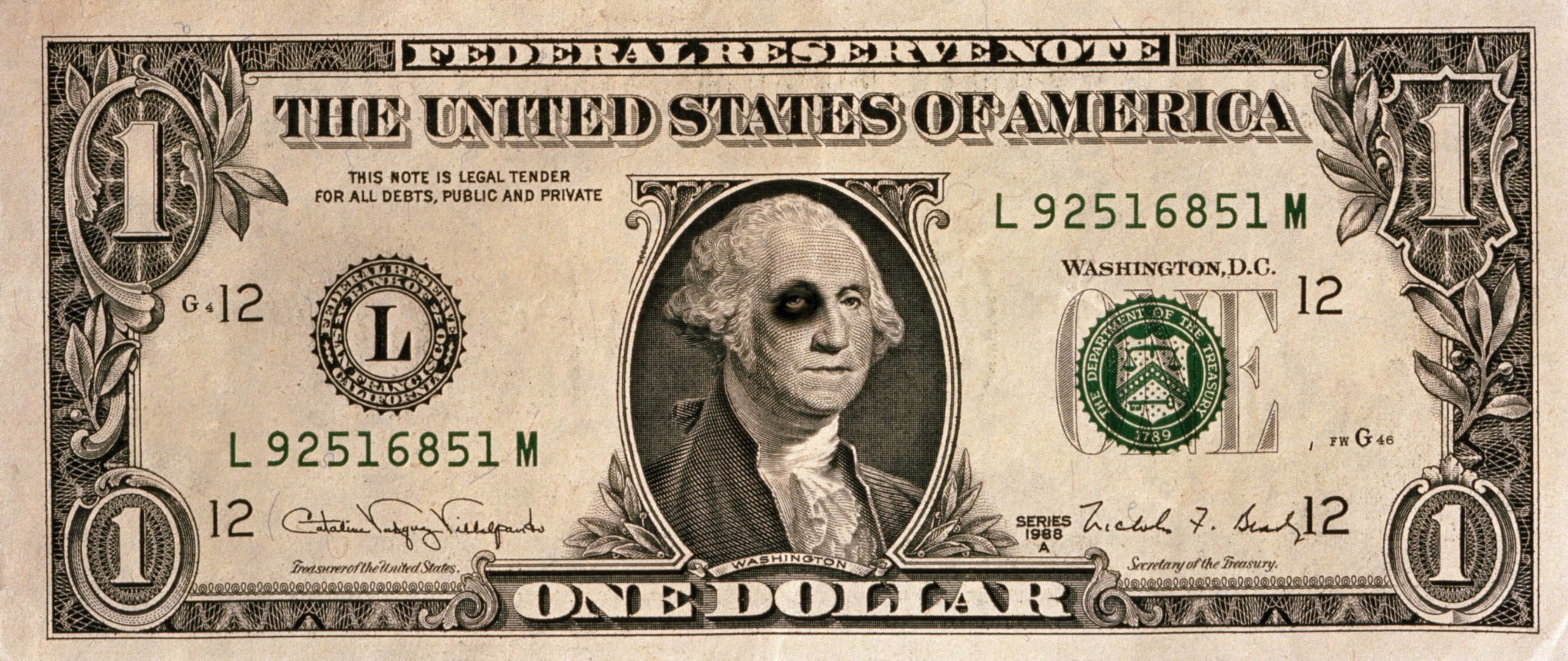The Role of the U.S. Dollar in Retirement: Is It Secure?
Protect your retirement from de-dollarization, because “capital always goes where it is treated best."


Everybody knows the importance of Social Security, regular 401(k) contributions, and good health to achieving a secure retirement. Less clear is the role the U.S. dollar plays in financial readiness for life after work.
The dollar is more than just a form of payment used by Americans to purchase gas, buy a beer at the bar or pay the credit card bill. It is one of the most reliable currencies in the world, a status that has benefited American retirees for generations.
Since the end of World War II, the U.S. dollar has been the world’s principal reserve currency, meaning it is held in large amounts by other countries to promote stability in their own economies and for use in international transactions. The dollar is the most widely used currency for global trade, according to the Council on Foreign Relations.

Sign up for Kiplinger’s Free E-Newsletters
Profit and prosper with the best of expert advice on investing, taxes, retirement, personal finance and more - straight to your e-mail.
Profit and prosper with the best of expert advice - straight to your e-mail.
The dollar in retirement: breaking down its value
So, what does all that wonky currency talk have to do with people’s retirement and financial security?
Like most financial assets, the U.S. dollar rises and falls. The dollar’s price movements are based on economic conditions, the level of interest rates and inflation, and increasingly on how global trading partners view the United States’ trustworthiness and reliability.
The value of the U.S. dollar is also a key financial data point used to determine the health and future prospects of the U.S. economy and financial markets. It is also a gauge of how other nations perceive the United States.
This year, the dollar has performed poorly, a sign that foreign investor confidence in the U.S. may be diminishing, and investors are moving some of their money out of U.S.-denominated assets and investing elsewhere. In short, the weaker dollar is signaling that the U.S. image as a great destination for investment dollars is being questioned.
The dollar and American exceptionalism
“The questions around U.S. exceptionalism and (impact) on the dollar are a wake-up call,” said Adrian Helfert, chief investment officer, alternative and multi-asset portfolios at Westwood Group and manager of Westwood Income Opportunity Fund.
A good measuring stick is the euro, which Americans who travel to Europe for vacation are familiar with. At the start of the year, the euro/dollar was 1.0355, but hit a fresh high on April 21 of 1.1574. So, a U.S. traveler at the start of the year who spent 100 euros would have spent roughly $104 in U.S. dollars. A traveler today in Italy who spends $100 euros, would need nearly $116 to pay the bill.
Goldman Sachs said in a recent research note that strong U.S. asset return prospects are responsible for the dollar’s strength. However, analysts also argued that the impact of tariffs on U.S. profit margins and consumer real incomes, due to waning belief in U.S. exceptionalism, “could crack the central pillar of the strong dollar.”
Here are three ways the dollar can impact Americans’ retirement.

1. Purchasing power
When the dollar is strong compared to other currencies, Americans can buy more stuff with $1. When the dollar weakens, its purchasing power diminishes. This notion of getting more bang for your buck or spending less applies to both spending abroad and buying goods here in the U.S.
“The purchasing power of the dollar directly determines your standard of living,” said Helfert. Just like a 401(k) or IRA investor takes market risk and inflation risk into account, they must also consider so-called currency risk.
Let’s say you’re planning a trip to Italy this summer. If you spend 150 euros on a fish-based antipasto, polenta, pasta, salad, wine, and dessert, it will cost you $172.50 at today’s exchange rate of 1.15. A year ago, that same meal would have cost you about $161.
2. Investment returns
A primary reason why U.S. stocks and other assets have performed so well over the past two decades is that foreigners viewed the prospects for strong returns as better than those in other countries around the world. And all the capital flowing into U.S. markets boosted asset prices, making the dollar strong as well.
“Capital always goes where it is treated best,” said Kristian Kerr, head of macro strategy for LPL Financial.
Let’s say the dollar weakens even more relative to the euro, say from 1.15 to 1.30. That will likely spur investors to move money out of the U.S. and into European markets, where the currency is strengthening, according to Kerr. “You’re going to see people putting money to work in international markets,” said Kerr.
That could create pressure on the value of an American-centric investment portfolio as money is withdrawn from the U.S. and invested elsewhere. The antidote, of course, is for investors to diversify their portfolio beyond U.S. borders, says Kerr. The good news? Foreign assets are selling at lower valuations than U.S. assets. “They’re historically very cheap,” said Kerr.
So-called de-dollarization, or a significant reduction in the use of the dollar worldwide, would shift the “balance of power among countries, and this could reshape the global economy and markets,” according to a J.P. Morgan blog post titled “De-dollarization: Is the U.S. dollar losing its dominance?”
According to J.P. Morgan, “De-dollarization would likely lead to a broad depreciation and underperformance of U.S. financial assets versus the rest of the world.”
What de-dollarization could mean for your portfolio
Here’s how a weaker dollar could impact your U.S.-based investments. Let’s say the U.S. stock or mutual fund you own goes up 5%, but the dollar loses 5% of its value. The greenback decline essentially wipes out your stock gain.
“So, currency can be a significant component of your portfolio return,” said Helfert.
While every Wall Street pro Kiplinger spoke to thinks it is a low probability that the U.S. dollar will lose its status as the world’s reserve currency — due to our markets' superior liquidity (meaning investors can buy and sell assets easily), deeply developed capital markets, and reputation for rule of law — there is a cost to be paid if the U.S.’s reserve currency status is called into question.
“It means increasing volatility of U.S. asset classes, it means potentially higher inflation, and it means a higher cost of capital for U.S. corporations,” said Helfert.
It also means that the so-called risk premium (i.e., the extra return an investor expects to receive for taking on a riskier investment compared to a risk-free investment, such as a U.S. Treasury note or bond) will increase. “And that lowers the long-term equity returns expected in the U.S., mainly due to higher capital costs.”
3. Borrowing costs
If money moves out of U.S. assets, including government bonds, that will probably result in higher interest rates, says Komson Silapachai, partner at Sage Advisory Services.
Higher interest rates mean higher borrowing costs. But on the plus side, higher rates mean retirees can earn more on their fixed-income investments, Silapachai says.
Like all financial headlines that rattle investors, Silapachai says investors shouldn’t get too caught up in worst-case scenarios. Stick to your long-term plan.
“These headlines are certainly intense, and there is a lot of fear out there,” says Silapachai. “But, ultimately, any long-term investor, including folks looking to save for retirement, sticking to that long-term is going to be the most important thing.”
Related content
Get Kiplinger Today newsletter — free
Profit and prosper with the best of Kiplinger's advice on investing, taxes, retirement, personal finance and much more. Delivered daily. Enter your email in the box and click Sign Me Up.

Adam Shell is a veteran financial journalist who covers retirement, personal finance, financial markets, and Wall Street. He has written for USA Today, Investor's Business Daily and other publications.
-
 Retire in France for Beauty and Culture
Retire in France for Beauty and CultureFrance offers a great history and a slower pace of life for retirees. At times, it can feel like stepping into a postcard.
By Brian O'Connell
-
 Walmart+ Week 2025: Top Deals, Streaming Perks and Member-Only Savings
Walmart+ Week 2025: Top Deals, Streaming Perks and Member-Only SavingsWalmart+ Week runs April 28 –May 4 with fuel savings, free express delivery and six months of Paramount+ with SHOWTIME. See all the perks.
By Choncé Maddox
-
 Retire in France for Beauty and Culture
Retire in France for Beauty and CultureFrance offers a great history and a slower pace of life for retirees. At times, it can feel like stepping into a postcard.
By Brian O'Connell
-
 To Stay on Track for Retirement, Consider Doing This
To Stay on Track for Retirement, Consider Doing ThisWriting down your retirement and income plan in an investment policy statement can help you resist letting a bear market upend your retirement.
By Matt Green, Investment Adviser Representative
-
 How to Make Changing Interest Rates Work for Your Retirement
How to Make Changing Interest Rates Work for Your RetirementHigher (or lower) rates can be painful in some ways and helpful in others. The key is being prepared to take advantage of the situation.
By Phil Cooper
-
 The 'Rule of 25' for Retirement Planning
The 'Rule of 25' for Retirement PlanningTry the simple calculation of the 'Rule of 25.' Because sometimes, a back-of-the-napkin idea is all you need to get started.
By Jacob Schroeder
-
 Within Five Years of Retirement? Five Things to Do Now
Within Five Years of Retirement? Five Things to Do NowIf you're retiring in the next five years, your to-do list should contain some financial planning and, according to current retirees, a few life goals, too.
By Evan T. Beach, CFP®, AWMA®
-
 The Home Stretch: Seven Essential Steps for Pre-Retirees
The Home Stretch: Seven Essential Steps for Pre-RetireesThe decade before retirement is the home stretch in the race to quit work — but there are crucial financial decisions to make before you reach the finish line.
By Mike Dullaghan, AIF®
-
 My Great Retirement Dream: Sell My House, Downsize, Live off the Proceeds and Dabble in Stocks. Can I Do It?
My Great Retirement Dream: Sell My House, Downsize, Live off the Proceeds and Dabble in Stocks. Can I Do It?I ask an expert financial planner if my retirement dreams are realistic — or if my head is in the clouds.
By Donna Fuscaldo
-
 Five Trusts You Need to Know About and the Best Time to Use Them
Five Trusts You Need to Know About and the Best Time to Use ThemYou can use trusts to cement your legacy, organize your estate and limit your exposure to estate and gift taxes.
By Donna LeValley